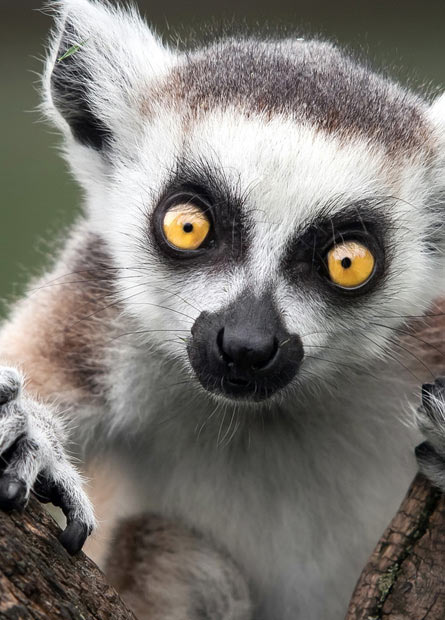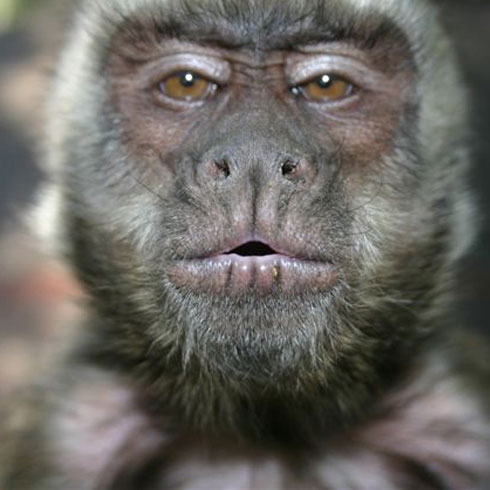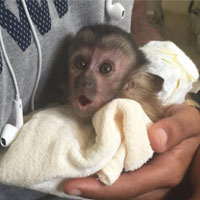These furry and relatively placid pro-simians are the latest additions to our sanctuary. They can almost always be seen basking in the sun, sitting in a meditative position much like that of a yoga instructor!
Physical Characteristics:
Reddish-grey in colour, with white on their undersides and on the ears. Distinctive rings around their eyes and black and white rings around their tails set them apart from other subspecies, making them quite easy to spot in the wild. Visitors often comment on their black muzzles, looking quite like that of a small dog. The size of males and females is approximately the same, with body length being 42.5 cm on average. Ringtailed lemurs weigh between 2,207-2,213g. One remarkable physical feature of this subspecies is a scent gland located on the underside of each wrist, called a “horny spur.”
Habitat:
Ringtailed Lemurs are found in limited forest lands in the south and southwest of Madagascar, making them a vulnerable species. Baring in mind that their home is an island, it is only a matter of time before they are literally contained to a corner of the island and dissipated altogether. Crucial conservations efforts need to be active in protecting the species before this happens. Unlike other lemur species, ringtails do send most of their time on the ground. Ringtailed lemurs living in dry habitats tend to be more spread out than those living in wet habitats. Natural predators include snakes, raptors, fossas and domestic cats.
Diet:
Being omnivores, ringtailed lemurs typically eat flowers, exudates, insects, birds, and the tamarind tree’s leaves and fruit. In particularly dry climates, water is obtained from aloe plants and prickly pear cactuses.
Life Cycle:
Although their lifespan in the wild is unknown, it has been estimated to be about 16 years. In captivity, they can live up to 10 years longer.




 Conservation in Southern Africa is rapidly becoming unsustainable without the active involvement of the community, especially the younger, more active generation. The Bushbabies Monkey Sanctuary and The Elephant Sanctuary group strongly believe that we have to get the younger members of communities involved to instill a passion for the environment and wildlife in them through education.
Conservation in Southern Africa is rapidly becoming unsustainable without the active involvement of the community, especially the younger, more active generation. The Bushbabies Monkey Sanctuary and The Elephant Sanctuary group strongly believe that we have to get the younger members of communities involved to instill a passion for the environment and wildlife in them through education. I'll introduce you to Joyce, for example. A young female capuchin, she was rather pampered with child-like paraphernalia; a dress and a small hat around her head. Cute, indeed. She had been with her "foster" family since only two months old, bought straight from a breeder. The couple who owned her did not have children, and so decided to substitute the missing link with a primate, albeit a bit smaller...and with sharper teeth.
I'll introduce you to Joyce, for example. A young female capuchin, she was rather pampered with child-like paraphernalia; a dress and a small hat around her head. Cute, indeed. She had been with her "foster" family since only two months old, bought straight from a breeder. The couple who owned her did not have children, and so decided to substitute the missing link with a primate, albeit a bit smaller...and with sharper teeth.



